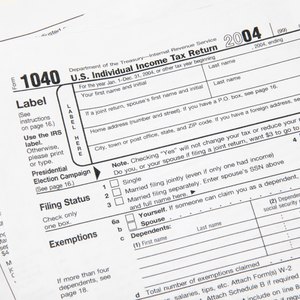
In addition to other tax deductions, the Internal Revenue Service offers a tax credit for low-income individuals who make contributions to qualified retirement plans. Qualified retirement plans include IRAs, 401k plans and 403b plans. The amount of the credit ranges from 10 percent to 50 percent of the amount contributed, depending on the filer’s status and adjusted gross income. The IRS caps the maximum amount of the tax credit: as of 2011, the credit applies to the first $2,000 of retirement contributions.
Look up your adjusted gross income on your income tax return. On Form 1040, your AGI is found on line 38; on Form 1040A, your AGI is found on line 22.
Find your AGI range in the left column and your filing status in the top row of the table on Form 8880. The amount shown where the row and column intersect is your Retirement Savings Credit multiplier. For example, if you have an adjusted gross income of $26,000 in 2011 and your filing status is head of household, your multiplier is 0.2.
Multiply the smaller of the $2,000 annual limit or your total retirement contributions for the year by the multiplier from the preceding step to find your retirement savings tax credit. As an example, if you contributed $3,000, which exceeds the $2,000 limit, you multiply $2,000 by 0.2 to find your retirement savings credit is $400.
References
Writer Bio
Based in the Kansas City area, Mike specializes in personal finance and business topics. He has been writing since 2009 and has been published by "Quicken," "TurboTax," and "The Motley Fool."

